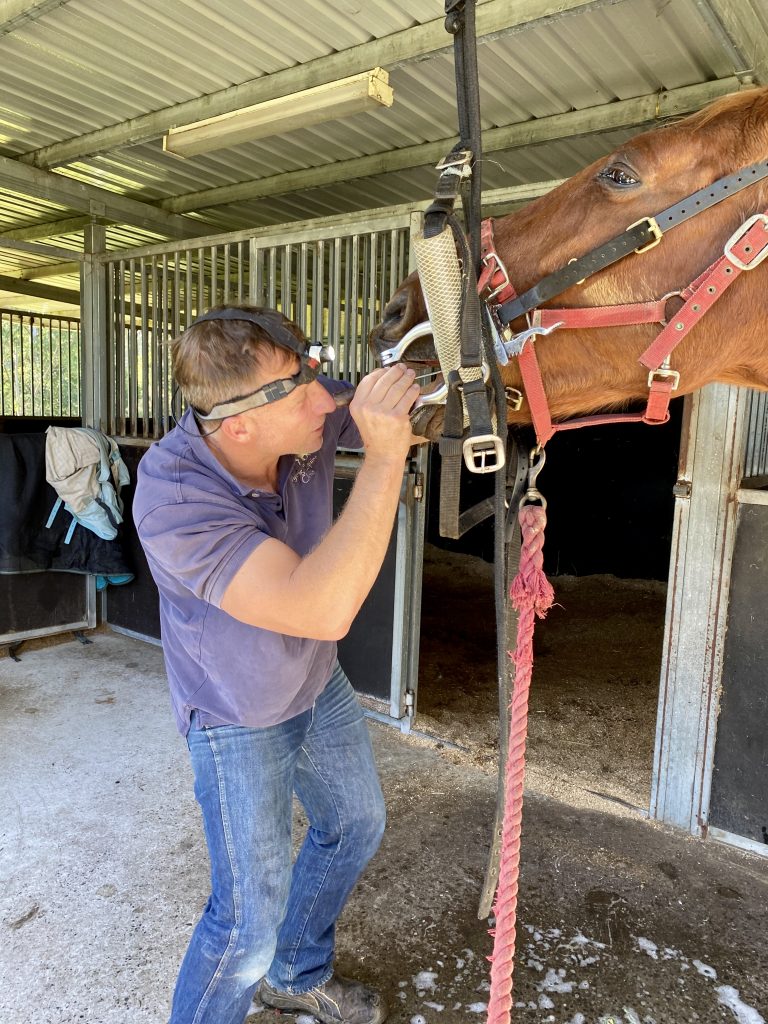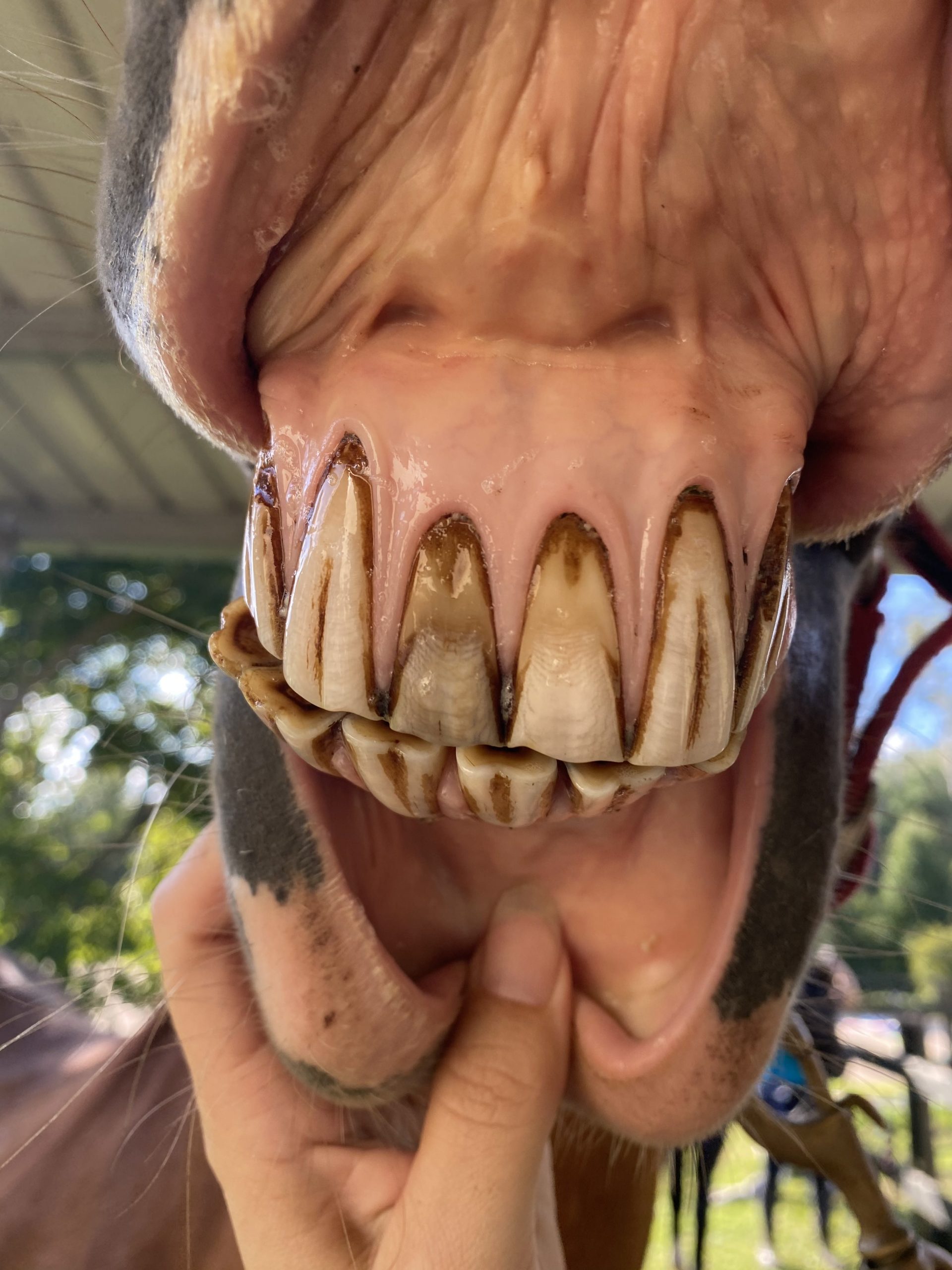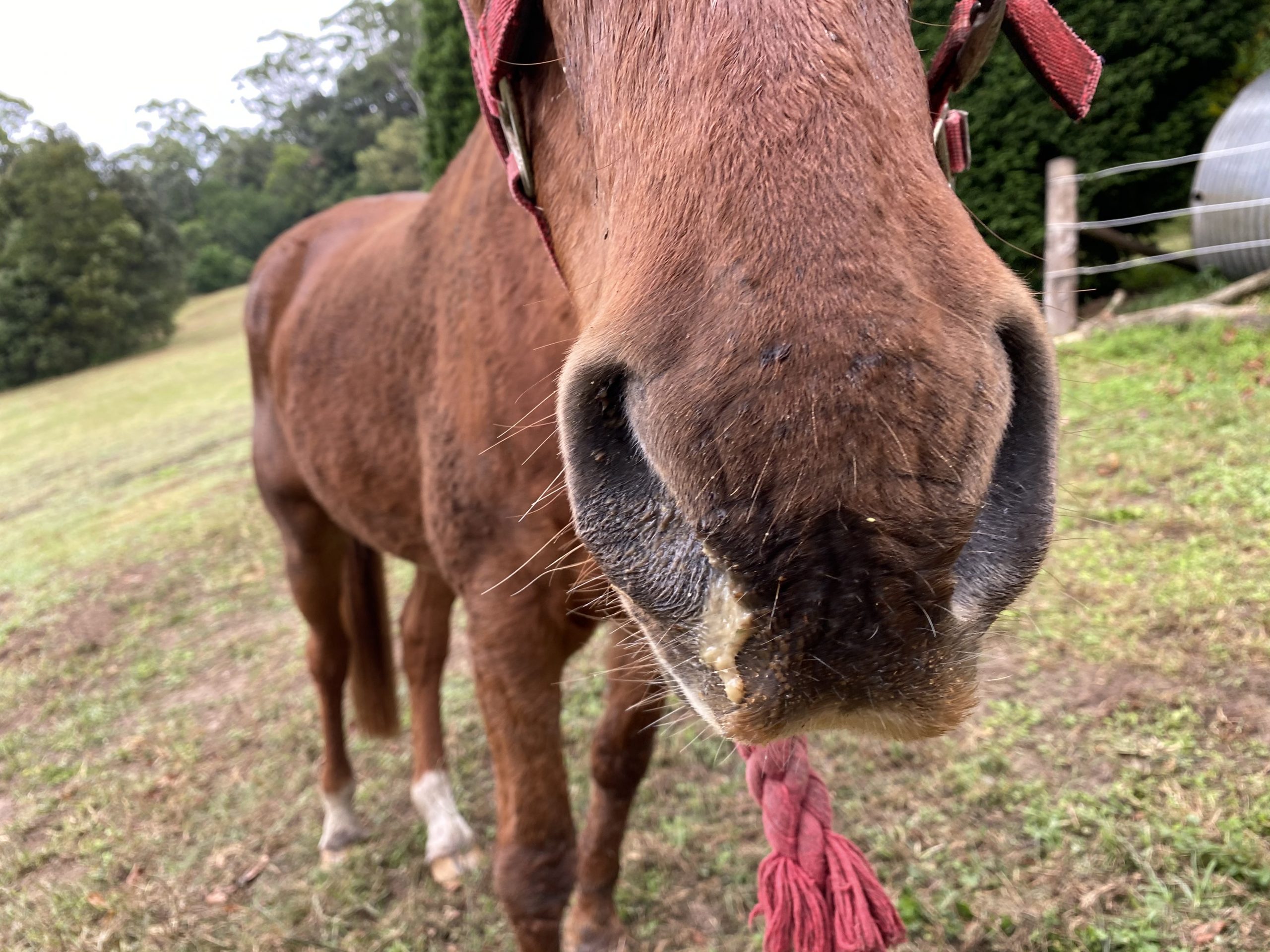Taking Care of Horses’ Teeth
Horses’ teeth are truly fascinating! They are completely different from human teeth and most other animals. Horses’ teeth have evolved over millions of years to allow them to graze pasture effectively and efficiently. So, what makes horses teeth so different, and how should we be taking care of horses’ teeth?
You and I have teeth that are known as brachydont or short crowned. Dogs and cats also have brachydont teeth. This means that the visible part of the tooth, the crown, in humans is permanent and does not change over time. An adult horse’s teeth are called hypsodont or long crowned. As the crown of a horse’s tooth is worn away from constant chewing, the long tooth is pushed up like a tube of lipstick, exposing more of the reserve crown. The tooth will continue to be pushed up until it runs out like a tube of lipstick. It is believed by some people that horses’ teeth continually grow, teeth that do that are called elondont. Rabbits have elondont teeth that continually grow their whole life and need to be worn down. Their teeth are like a tube of lipstick that never runs out. Unlike rabbits, once horses’ teeth reach the end of their length, they fall out and are not replaced. That is why horses need special care to make sure their teeth last and are in good health for as long as possible, because once that tooth is damaged or worn out, it cannot be replaced.

Types of horse’s teeth
When a foal is born, they do not have any teeth at all. As a horse gets older, 4 sometimes 5 different types of teeth will appear, these include:
Incisors, that are used to grasp and tear grass.
Canines, typically only appear in males, but sometimes in fillies. Canines are unique in the equine mouth as they are brachydont not hypsodont.
Premolars and Molars, they are used to grind food.
Wolf Teeth, not to be confused with canine teeth, appear around 6-12 months if they appear at all. Some horses have evolved past wolf teeth and never have them.

At what age do different teeth appear?
The very front temporary incisors will appear at about 6 days of age, the set next to them will appear at 6-8 weeks, and the last set will appear next to them at 6 months (12 in total). Permanent long crown incisors will appear at around 2.5 years for the very front set, and then 3.5 years, and 4.5 years for the full set of incisors. The canine teeth appear around 4 years of age. Long crown premolars appear at 2.5yrs, 3 years, and 4 years for the full set. Molars emerge at 1 year, 2 years, and 3.5 years. A mature horse will have 40 teeth in total, 42 if you count wolf teeth. This is how we can estimate the ages of young horses. We can estimate the ages of older horses as their teeth wear out, but it is not as accurate as horses’ teeth wear down differently depending on what they are fed and genetic predisposition.
The guide for when certain teeth appear in your horse help us to know when to have our horses’ teeth checked by a qualified equine veterinary dentist. When teeth first appear, it is always a good idea to check and make sure that your foal’s jaws align properly and teeth, as they grow, will wear evenly. Foals with a parrot mouth, for example, will need regular dental care to keep their teeth even and functional. If your horse develops wolf teeth, they will need to be removed as they may cause pain when a bit is put in the mouth. A young horse should have their teeth checked every 6 months as their teeth develop and are replaced by permanent teeth, after they fully mature at around 4 to 5 years of age, they should be checked every year. When your horse reaches his senior years around 20, they may need to be checked every 6 months as teeth will start to become short and are prone to damage and disease. Geriatric horses who have lost teeth, will need to be fed a special diet as they become unable to tear and grind grass, hay, and grains. Soaked beet pulp, chaff, and extruded feeds are wonderful ways to keep a geriatric horse in good condition. Supplements such as Ranvet’s Ration Balancer and Grand Prix Oil can also be added to these wet rations to keep them healthy and happy.
Dental Issue in horses
A horse’s training should include allowing us to have a look at their teeth. This way we might be able to detect an issue quickly and resolve it to prevent pain and unwanted behavioural issues down the road. Horses are particularly good at hiding pain from us, but here are some signs that your horse may have painful dental issues:
- Dropping food while eating
- Reluctance to take a bit or poor performance
- Bad breath
- Nasal discharge (usually from one nostril)
- Facial swelling
- Weight loss
- Aggression
- Discoloured or broken teeth


If your horse is showing any of these signs, it is important for them to be looked at by an equine veterinary dental specialist as soon as possible.
Written by Neely Hopkins.
Experts in Equine Nutrition
Every product in the Ranvet range has been developed to meet a horse’s most specific need at any given time, be it in a training environment or on a breeding farm. Having pioneered the formulation of specific medications and dietary supplements for horses, the company is now recognised as a leader in the areas of equine health and nutrition.
